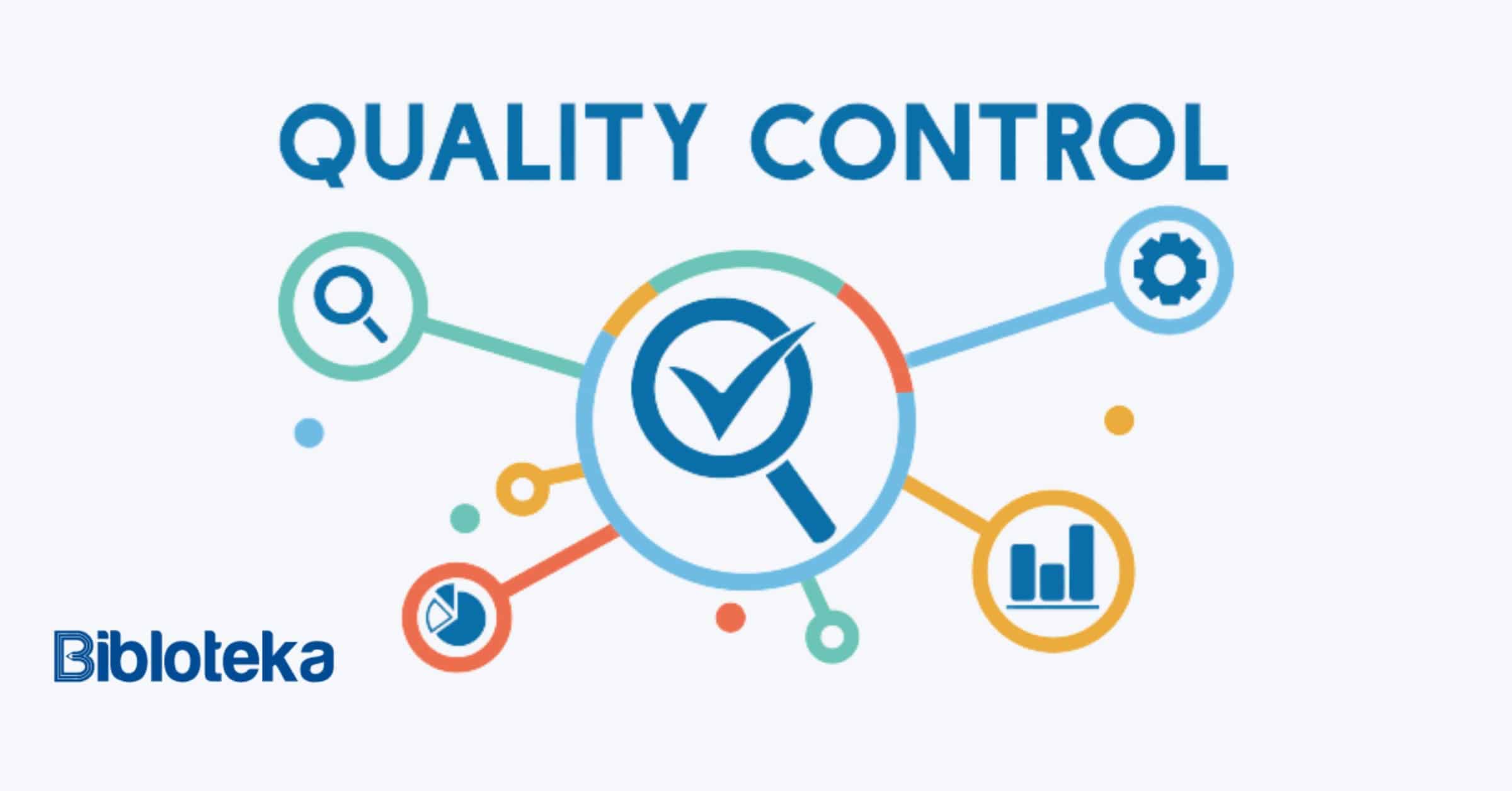Despite development in construction safety equipment, instruments, technology and training, the construction industry continues to face high rates of fatal and non-fatal injuries and accidents among its workers.
For example, 20% of worker deaths in the United States are in construction, but construction workers make up only 6% of the U.S. labor force. This disparity highlights the need for a continued push to improve safety on the job for those working in the construction industry. That is why we need “quality control procedures in construction.”
Let us start by defining the term construction quality since there are often misconceptions about this in the construction industry. Quality is not exceeding customer expectations or going beyond what was asked for.
Following are the few steps to improve quality control procedures in the construction process.
(1): Define and share acceptance criteria.
(2): Create an inspection plan.
(3): Make checklists to conduct inspections.
(4): Correct deficiencies and verify acceptance criteria.
(5): Prevent future deficiencies.
Define and share acceptance criteria:
The first step is to define the definition of “done.” It’s important to ensure that superintendents, crews, and subcontractors are on the same page about what does and does not qualify as an acceptable result. When all the project participants understand what the goal is, they are better able to get it right the first time.
Some of the standards that might be incorporated into the acceptance criteria include:
- No visible defects
- Complies with minimum code standards
- Meets all manufacturers’ specifications
- Conforms to the customer’s contract specifications
- Specific organizational preferences
- Project-specific quality standards
- Industry common practices
The more clearly you can articulate the acceptance criteria, the better employees and subs will be able to meet your expectations.
Create an inspection plan
The inspection process allows you to determine whether a specific task was completed to the specifications. It’s how you know you have met the acceptance criteria that were defined in the first step. The team needs to know what will be inspected, when inspections will happen, and who is responsible for doing them. In some cases, this might be third-party inspectors.
The quality control procedure in the construction process requires dozens or even hundreds of inspections. Creating a plan in advance allows you to determine all the necessary inspections and to confirm that they have been completed through a record of acceptance. Without this plan, you might assume that a lot of inspections were done, but you won’t necessarily know which ones were not completed
Make checklists to conduct inspections
Quality inspection checklists in quality control procedures in the construction process can help you stay organized and ensure that all critical items are verified. However, not all checklists are equally effective, and they are not always properly used.
One common problem is that checkpoints are often vague such as “The … looks good” or “Check the … is right”. This leaves the inspection open to interpretation and inconsistency. Moreover, many checklists are a simple binary yes/no or complete/incomplete, and this is not enough to truly measure quality in a project.
NCR is used to determine a customer’s resolution and to document any corrective actions taken. This action is taken when we conduct an inspection.
Correct deficiencies and verify acceptance criteria
When deficiency has been identified through the inspection process, subs and crews must correct them. The process is to:
- Physically mark the issue or area to prevent coverup.
- Take a picture to clearly identify the issue and show how it’s marked in the field.
- Correct the issue.
- Document the correction.
These deficiencies must be known for the Non-Conformance Report and, while knowing these deficiencies, corrective action is taken.
Prevent future deficiencies
The final step closes the loop. Learn why the deficiency happened and adjust the quality control in the construction process so it doesn’t happen again. Make sure the item is included in the acceptance criteria and communicated to all parties.
Add to your checklist system and include it in your inspection plan. Success is when you don’t see the issue again, and you are that much closer to achieving first-time quality with zero defects.
The process listed above can seem like a lot to juggle, even for the most experienced construction quality control managers. To prevent future deficiencies, a proper way must be found so that this problem will never happen again. This information must be in the NCR report.
Contractor quality management Process
All contractors try to manage quality control procedures in the construction process, but generally, most of them do not have a robust quality management process in place. In many cases, they do not have a written program either.
Traditionally, the project superintendent is responsible for the quality of the work. And the superintendent depends on the different craft workers to follow normal and customary industry practices when it comes to the quality of the work.
Actually, the project consultant is usually the one who issues a non-conformance report. The report must state an undeniable truth and provide clear and sufficient evidence to back up the assertion.
After making the necessary modifications, the NCR follows the agreed-upon conditions for tracking and closing the report. Non-conformance reports are frequently used as training tools by team leaders to teach other employees how to avoid similar situations in the future.
Failure to meet project quality requirements can have several negative connotations on the project delivery process. It creates extra work for the parties involved but has the greatest impact on the contractor, though it may negatively influence the designer and the owner to some extent.
It can damage business relationships and possibly lead to time-consuming and costly litigation for contractors. In a research study conducted a few years ago, the findings revealed that costs associated with rework (having to redo a step or portion of construction due to poor craftsmanship or change in plan) were as high as 12% of the total project cost and required as much as 11% of the total project working hours. These are the causes why we need an NCR report.
Managing Quality
Quality Assurance Personnel: The role of the quality assurance personnel is to ensure that the quality control procedure in the construction process is functioning properly and its intent is carried out diligently.
QA Procedures: Review adequacy of the quality assurance plan
- Determine if the work practices are such that the expected quality standard will be met.
- Examine the quality of the ongoing and completed work to determine that it meets or exceeds the project requirements.
- Ensure that the material used meets project quality standards.
- The finished work is sufficiently protected from harm or damage.
- Issue a report of acceptable work as well as any substandard work.
- Track the corrective work and issue a status report until satisfactory completion.
- Examine the quality control methods being used to determine if the supervisor is properly controlling construction activities.
- Review processes, practices and procedures. and identify possible areas for change so as to improve the quality of the resulting work
- Recommend any changes to project staff and/or management.
- Review QC documentation to ensure adequacy of systems.
Summary for Quality Control Procedures In Construction
The process of implementing Quality Assurance and Quality Control Procedure in Construction System is clearly understood that quality does not happen by chance; it has to be managed at every stage of the product.
A quality system is a mechanism by which a company can organize and manage its resources to achieve, sustain and improve quality economically. Quality Control Procedures in Construction Systems are analogous to financial control systems, information technology systems and personnel management systems.
After all the time and effort expands in producing the initial system, a dangerous point is reached. The danger is that once the system is complete, it will become a neatly packaged inviolate document.
This is the very thing that must be avoided, and positive action must be taken to prevent it. A well directed quality control construction process should focus on making the procedures more effective in terms of both Total Quality and the company’s aims.
Conclusion
A contractor must have a robust quality management program as it is critical to the overall success of a construction project. An effective program creates a process for clarifying standards and requirements, established means and methods for managing the process, defines responsibilities and accountabilities, and adds another avenue to manage the supply chain more effectively.
At the same time, it reduces misunderstanding and potential conflict. It effectively facilitates and manages the collection of data, identifies performance discrepancies and nonconforming work, and substantially increases efficiency by reducing defects and punch list work, which aids in improving the working relationship with the design team and the project owner.
It systematically manages quality and enhances the contractor’s project delivery, increases productivity, eliminates or reduces waste, and ultimately improves profitability.









